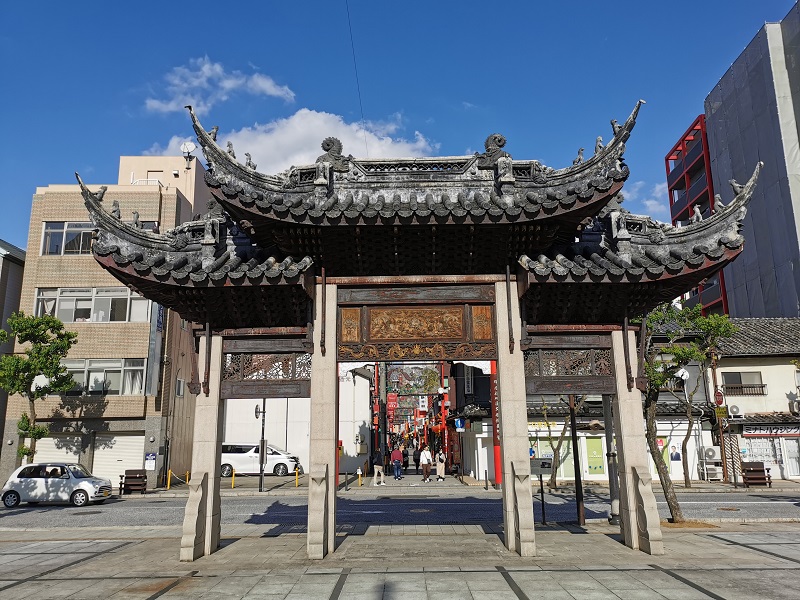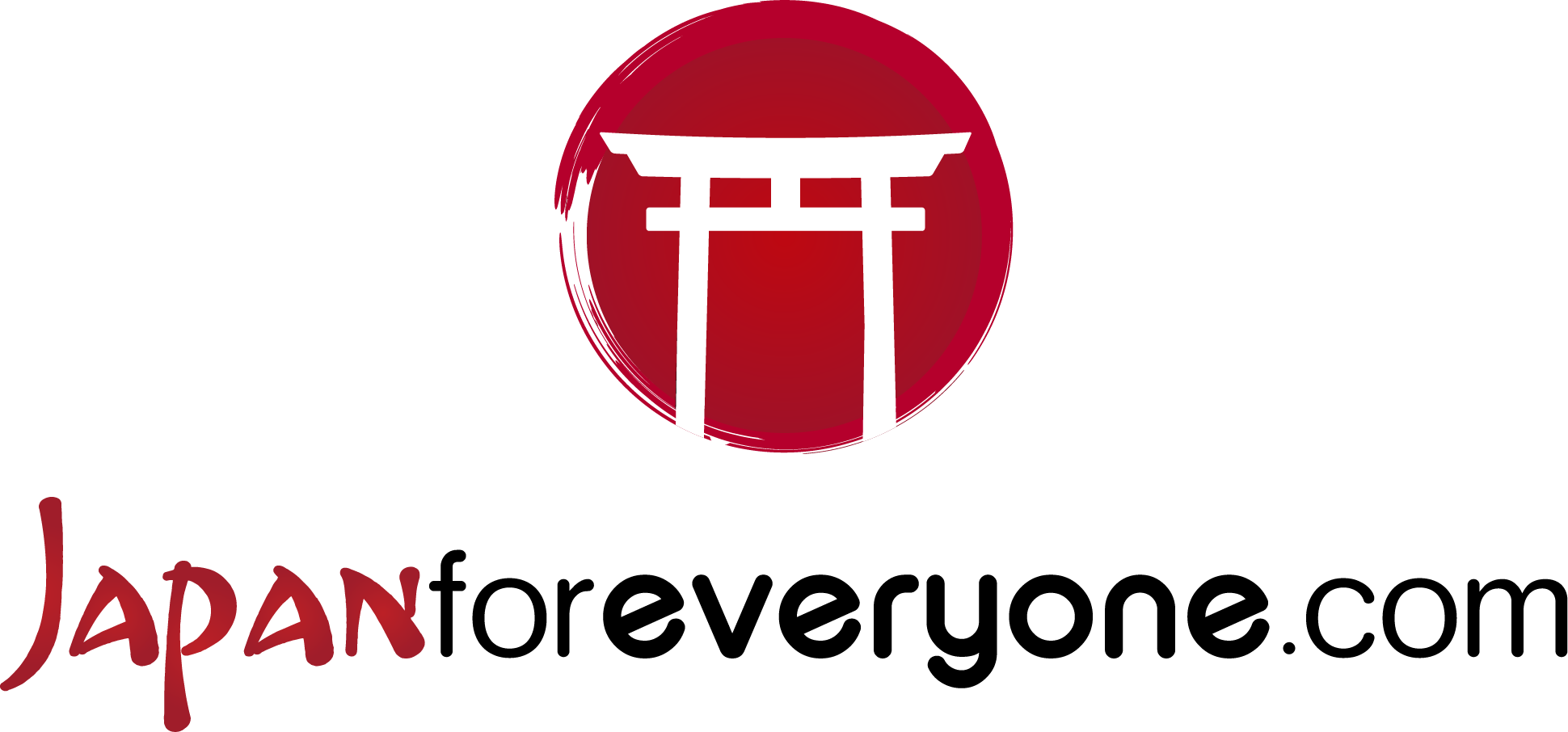What to do in Nagasaki
Nagasaki is located on the west side of the island of Kyushu, the south-west island of the Japanese archipelago.
It is famous for the dropping of the second atomic bomb during World War II, just three days after Hiroshima, on 9 August 1945.

Photo by Japanforeveryone.com
Gunkanjima, known as Hashima Island, is a small island off the coast of Nagasaki. Once a thriving coal mine, it is now an abandoned ghost town. Its unique and eerie appearance attracts tourists from all over the world, who can only visit it via guided tours. The island is a fascinating reminder of Japan’s industrial past and a testament to the evolution of a community over time.
Suicasmo, CC BY-SA 4.0, via Wikimedia Commons
Practical information
| View location on Google Maps | |
| Official website |
|
| Ferries do not run when there is bad weather | |
| Between 4850 and 5810 Yen for the boat tour and island visit | |
| You can take the ferry from the Nagasaki Port Terminal (Ohato tram line 1 stop) or from the Tokiwa Terminal (Ourakaikandori tram line 5 stop) |
The Peace Park and the Atomic Bomb Museum are two iconic sites in Nagasaki. The park stretches around the epicentre of the atomic explosion on 9 August 1945. The Peace Memorial, a statue representing a man praying, is the symbol of the park. The A-bomb Museum displays testimonies, photographs and objects that tell the story of the tragedy. These sites serve to preserve the memory of the victims and promote world peace, reminding us of the horrors of nuclear war and the importance of working towards a peaceful future.

Photo by Japanforeveryone.com
Practical information
| View location on Google Maps | |
| Atomic Bomb Museum | |
| Official website |
|
| 8:30-18:30 (until 17:30 from September to April) Last admission 30 minutes before closing |
|
| 29 to 31 December | |
| 200 Yen | |
| 5 minutes’ walk north of the Hamaguchimachi tram stop (line 1 or 3) |
Mount Inasa, located in Nagasaki, is one of the city’s main attractions. At over 300 metres high, it offers a spectacular view of Nagasaki and the surrounding bay. The ascent to the mountain can be made by car, cable car or on foot via a series of stairways. Once at the top, visitors can admire the breathtaking view, especially at sunset when the city lights come on. Mount Inasa is a perfect place to admire the beauty of Nagasaki and enjoy an unforgettable panoramic view.

Photo by Japanforeveryone.com
Practical information
| View location on Google Maps | |
| Official website |
|
| 9:00-22:00 (departures every 15-20 minutes) | |
| Early December for maintenance | |
| 730 Yen (one way) 1250 Yen (round trip) |
|
| The cable car to Mt Inasa is located: 20 minutes’ walk north-west of JR station 15 minutes’ walk west of the Takaramchi tram stop (line 1 or 3) From mid-March to mid-December, a bus is available from JR station and costs 190 Yen (one way) |
Glover Garden
The Glover Garden is one of the most enchanting places in Nagasaki. Located on the hills of Minami-Yamate, it offers a panoramic view of the city and the harbour. The garden is famous for its flowers, old trees and well-preserved western architecture dating back to the days when Nagasaki was an international port. It is an ideal place for a relaxing walk and a peaceful moment surrounded by nature. The Glover Garden is one of Nagasaki’s most popular tourist attractions and offers a unique perspective on the history and architecture of this fascinating Japanese city.
Fg2, Public domain, via Wikimedia Commons
Practical information
| View location on Google Maps | |
| Official website |
|
| 8:00-20:30 (until 21:30 in summer and high season) | |
| No closing days | |
| 620 Yen | |
| 5 minutes’ walk south of the Ouratenshudo-shita tram stop (line 5) |
Sofukuji Temple
Sofukuji Temple is an important cultural and spiritual attraction located in Nagasaki. Built in 1629, it is one of the oldest and most impressive Chinese temples in Japan. Its architecture is a mix of Chinese and Japanese styles, creating a unique and fascinating atmosphere. The temple is known for its splendid red columns, carved dragons and beautiful decorations. Visiting Sofukuji Temple offers an opportunity to immerse oneself in Chinese and Japanese culture and to enjoy an experience of tranquillity and spirituality. It is an ideal place to reflect and find inner peace amidst the chaos of everyday life.

Photo by Japanforeveryone.com
Practical information
| View location on Google Maps | |
| 8:00-17:00 | |
| No closing days | |
| 300 Yen | |
| 5 minutes’ walk north of the Shokakuji-shita tram stop (line 1 or 4) |
Dejima
Dejima is a small historical island located in Nagasaki Bay. During the period of Japan’s isolation in the 17th century, Dejima was the only point of contact between the country and foreign merchants. The island served as a Dutch trading district and was subject to strict restrictions. Today, Dejima has been reconstructed and turned into a museum that reconstructs the bygone era. Visitors can explore historical buildings, admire artefacts from the era and learn more about Nagasaki’s history as an international port. Dejima is a must-see place for fans of Japanese history and culture.
Today, Dejima is no longer an island. The surrounding area was reclaimed during the 20th century.
663highland, CC BY-SA 3.0, via Wikimedia Commons
Practical information
| View location on Google Maps | |
| Official website |
|
| 8:00-21:00 Last entry 40 minutes before closing time |
|
| No closing days | |
| 520 Yen | |
| Get off at the Dejima tram stop (line 1) |
Kofukuji Temple
The Kofukuji temple is a hidden gem in the heart of Nagasaki. Built in 1620, it is one of the oldest Buddhist temples in the city. Its traditional Japanese design, with pagoda roofs and bright colours, immediately catches the attention of visitors. Although it was destroyed during World War II, it has since been faithfully reconstructed to preserve its original beauty. Inside the temple, there are statues and objects of historical value. Kofukuji Temple is a place of peace and spirituality, perfect for a moment of contemplation and immersion in Japanese Buddhist culture.

Photo by Japanforeveryone.com
Practical information
| View location on Google Maps | |
| Official website |
|
| 8:00-17:00 | |
| No closing days | |
| 300 Yen | |
| 10 minutes’ walk south-east of the Kodaiko-mae tram stop (line 3, 4 or 5) |
Oura Catholic Church
The Oura Catholic Church, located in Nagasaki, is one of the city’s most visited tourist attractions. Built in 1864, it was one of the first Catholic churches in Japan to be built after the country’s ban on Christianity. The church is famous for its European architecture, stained glass windows and a Gothic-style bell tower. Inside the church, visitors can admire works of art and decoration including sacred images and hand-painted frescoes. The Oura Catholic Church is a symbol of religious tolerance and acceptance in the heart of Nagasaki.
Japanexperterna, CC BY-SA 3.0, via Wikimedia Commons
Practical information
| View location on Google Maps | |
| Official website |
|
| 8:00-18:00 (April to November) 8:30-17:30 (December to March) Last admission 30 minutes before closing |
|
| No closing days (the museum is closed from 31 December to 2 January) | |
| 1000 Yen | |
| 5 minutes’ walk south of the Ouratenshudo-shita tram stop (line 5) |
Koshi-byo Shrine
The Koshi-byo Shrine is an important place of worship located in Nagasaki. Built in 1893, it is dedicated to the memory of the first Chinese immigrants who settled in the city. The shrine features beautiful Chinese architecture with bright colours and intricate details. Inside, there are statues and altars dedicated to important Chinese historical figures, such as Confucius and Guangong. The Koshi-byo Shrine is a place of peace and reflection, where visitors from different cultures can appreciate the rich heritage and spirituality of Nagasaki’s Chinese community.
STA3816, CC BY-SA 3.0, via Wikimedia Commons
Practical information
| View location on Google Maps | |
| Official website |
|
| 9:30-18:00 Last entry 30 minutes before closing time |
|
| No closing days | |
| 660 Yen (including museum admission) | |
| 5 minutes’ walk north-east of the Ouratenshudo-shita tram stop (line 5) |
Dutch slope (Oranda-Zaka)
The Dutch Slope, also known as Oranda-Zaka, is a picturesque street in Nagasaki that reflects the Dutch influence in the city. During Japan’s period of isolation, the Dutch were one of the few groups of foreigners allowed to do business with the country. The Dutch Slope was the main street connecting the Dutch foreigners’ neighbourhood in Nagasaki. Today, the slope is a popular tourist attraction, with Dutch-style buildings, cafés and shops. Visitors can stroll along the street, admiring the unique architecture and immersing themselves in the fascinating atmosphere of Nagasaki’s colonial past.
663highland, CC BY-SA 3.0, via Wikimedia Commons
Practical information
| View location on Google Maps | |
| 10 minutes’ walk east of the Shiminbyoin-mae tram stop (line 5) |
Chinatown
Nagasaki’s Chinatown is a vibrant neighbourhood reflecting the city’s vibrant Chinese culture and history. Founded in 1895, it is one of the oldest Chinatowns in Japan. The streets are filled with shops, restaurants and stalls selling authentic Chinese food and souvenirs. An iconic Chinese gate welcomes visitors, while red lanterns light the way. During Chinese festivals, such as Chinese New Year, Nagasaki’s Chinatown takes on an even more fascinating appearance, with traditional parades and performances. It is an enchanting place to immerse oneself in Chinese culture and enjoy authentic delicious dishes.
Today, Nagasaki’s Chinatown is well known for its restaurants and famous local noodle dishes, Champon and Sara Udon. Restaurants are usually open from 11am to 3pm and from 5pm to 9pm.

Photo by Japanforeveryone.com
Practical information
| View location on Google Maps | |
| Official website |
|
| Restaurants: 11:00-15:00 and 17:00-21:00 | |
| 5 minutes’ walk east of the Tsukimachi tram stop (line 1 or 5) |







